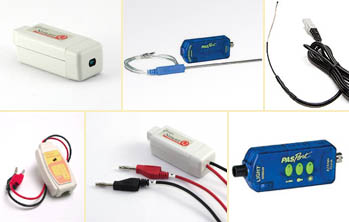Sensor Starter Pack

"A temperature sensor and a cookbook are tools for a Thanksgiving dinner, a temperature sensor and curiosity are tools for a science experiment." [1]
Start simple
- For a first time experience, select inexpensive and simple sensors to use. If calibration is needed, it should be minimal.
- Choose basic sensors that introduce inquiry to students. Good picks are temperature, light, and voltage. Most sensor vendors offer "Starter Packs."
Helpful hints
- Do not make the mistake of shelving the sensors on their arrival at your school. Unpack the sensors immediately for use with students, lest they are forgotten.
- Help students believe in the devices by demonstrating a simple calibration of a temperature sensor with boiling and ice water. Compare the results to that found with a traditional thermometer.
Teaching inquiry
- Allow the students to "mess around" and become familiar with the sensors.
- Remember that the probes are to be a way to teach inquiry instead of teaching sensors through inquiry.
- Only use sensors if seeing a graph in realtime is essential for understanding the phenomenon.
- Sensors are good at collecting and displaying data (especially over time) and when additional mathematical transformations must be applied to the data, allowing the students to be free to investigate and analyze.
1. Milken Educator Virtual Workspace-Teacher Researcher Conversations: Science and Technology
